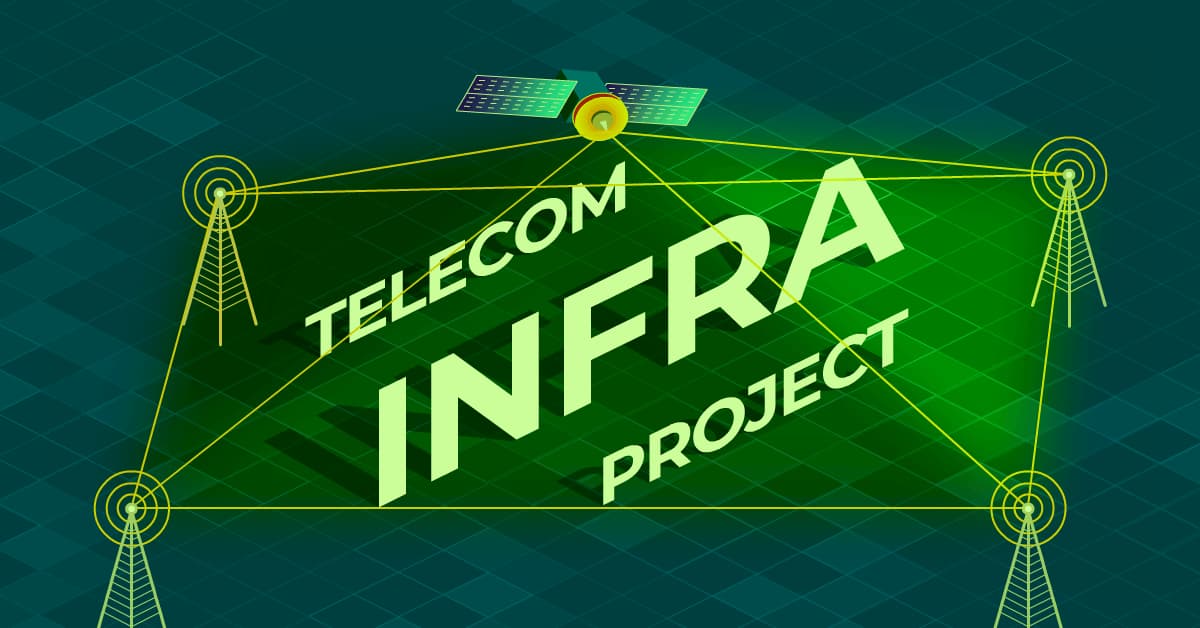
I was back in Amsterdam last week, again on my best behavior, for the fourth annual Telecom Infra Project (TIP) global summit in the RAI Centre. I was there in October for the regional OCP summit about which I wrote two blogs that can be found here, part 1 and part 2. This blog is going to be dedicated to exploring TIP with a focus on the Project Groups within. Firstly, we will look at the structure of the organization before examining their 3 strategic domains of Access, Transport, and Core and Management.
TIP is a non-profit organization formed by Facebook in 2016 as an engineering-focused, collaborative community for designing, building and deploying global telecom network infrastructure. The end goal of which is to enable global access for all at an affordable price (poor Facebook only has 2 billion users!). Since its establishment nearly 4 years ago it has gone from strength to strength with over 500 member companies, most of whom being the who’s who of the operator industry. Just to name drop a few we have Deutsche Telekom, T-Mobile, Vodafone, SK Telecom, Reliance Jio, Telefonica, Bell Canada, Tata Communications and many more. There is also a raft of other types of members involved in projects including start-ups, developers, integrators, hardware manufacturers, and other entities. How does it work? Read on…
How it works
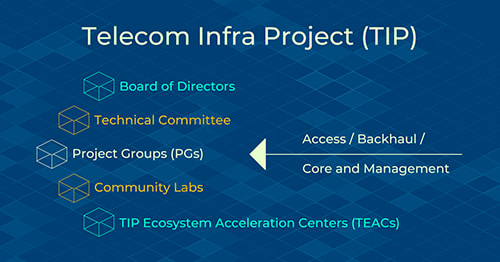 The most important part of all these organizations whether talking about OCP, ONF or TIP, is the Project Groups (PGs). They are responsible for creating the actual specification of the products. Before they can begin working, their charter must be accepted and approved by the Board of Directors and the Technical Committee. The charter is a written record containing the scope of the project along with timelines, goals, and deliverables. The Project Groups are classified under 3 technical fields which I will talk about shortly. These are Access, Transport and Core and Management. Products that have been created in the Project Groups are then usually moved to the Community Labs where they are rigorously tested. There are 7 or these labs dotted around the globe in the US, Brazil, UK, India, Germany and South Korea. The final piece of the puzzle is the TIP Ecosystem Acceleration Centers or TEACs. TEACs allow start-ups and entrepreneurial investors the opportunity to access operator’s environments for product development and testing. There are 4 labs at present, BT in the UK, Orange in Paris, Deutsche Telekom in Germany and finally SK Telecom in South Korea.
The most important part of all these organizations whether talking about OCP, ONF or TIP, is the Project Groups (PGs). They are responsible for creating the actual specification of the products. Before they can begin working, their charter must be accepted and approved by the Board of Directors and the Technical Committee. The charter is a written record containing the scope of the project along with timelines, goals, and deliverables. The Project Groups are classified under 3 technical fields which I will talk about shortly. These are Access, Transport and Core and Management. Products that have been created in the Project Groups are then usually moved to the Community Labs where they are rigorously tested. There are 7 or these labs dotted around the globe in the US, Brazil, UK, India, Germany and South Korea. The final piece of the puzzle is the TIP Ecosystem Acceleration Centers or TEACs. TEACs allow start-ups and entrepreneurial investors the opportunity to access operator’s environments for product development and testing. There are 4 labs at present, BT in the UK, Orange in Paris, Deutsche Telekom in Germany and finally SK Telecom in South Korea.
Project Groups
As previously mentioned, the project groups are the lifeblood of these not-for-profit organizations. Without the collaboration of top-class engineers from all over the world, it would be impossible to create the hardware and software that is both flexible and agile, and most importantly interoperable. Let’s have a closer look at what is happening within the project groups in the 3 strategic areas of Access, Transport and Core and Management. I will explain 1 project in more detail than the rest to give you a better idea of the working environment.
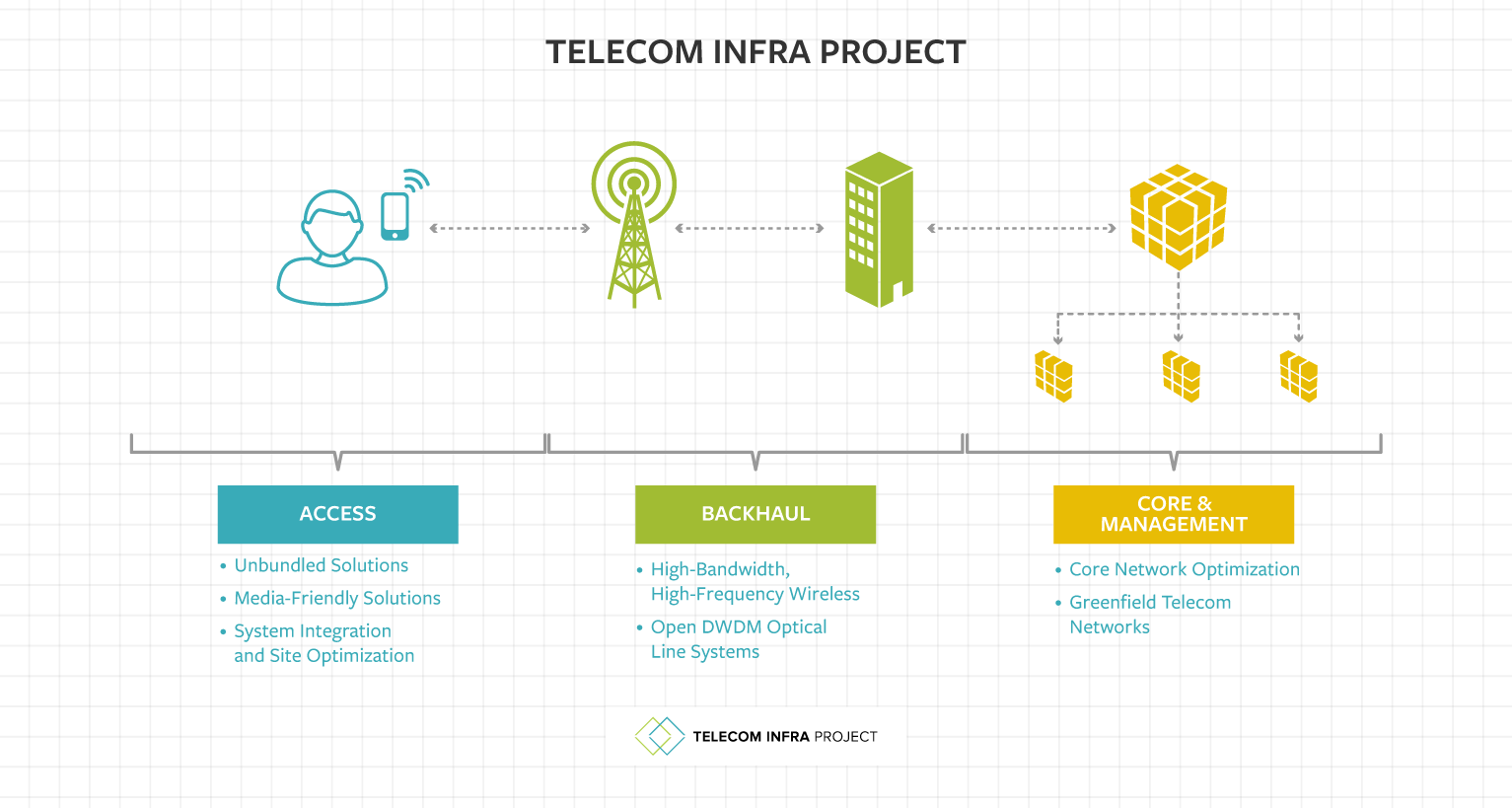 (access, transport and core and management)
(access, transport and core and management)
Access – Access Project Groups are working to identify and create innovative infrastructure solutions, technologies, and methodologies to make it easier to connect people to the Internet. Access is focused on removing some of the obstacles that can make the connection to the end user difficult. The projects are:
- CrowdCell – This PG is developing 4G relay architectures to extend indoor coverage while also saving on OPEX and CAPEX.
- Open Cellular – The goal of this project is to connect the unconnected in rural areas with a sustainable community cellular infrastructure.
- OpenRAN – This Project Group aims to define and build 2G, 3G and 4G RAN solutions based on vendor-neutral hardware and SDN principles. The image below gives an insight.
- OpenRAN 5G NR – This aims to deliver a definitive whitebox platform for a 5G NR access point that is easy to configure and deploy.
- vRAN Fronthaul – RAN solution for non-ideal fronthaul between the vBBUs (virtualized baseband units) and the RRUs (remote radio units).
- Wi-Fi – The goal is to foster collaboration, exploration, and standardization among organizations deploying Wi-Fi.
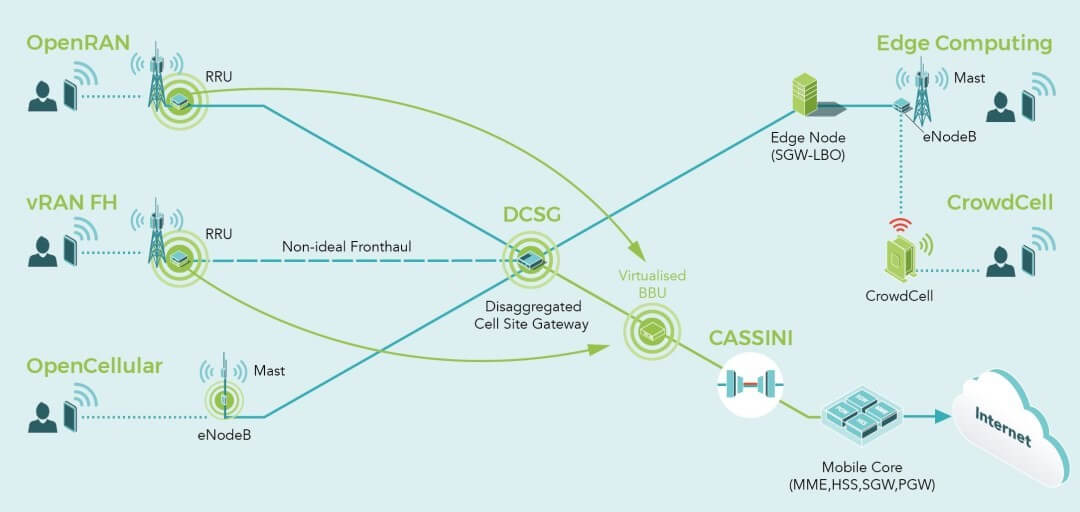 (Projects’ locations within the access environment)
(Projects’ locations within the access environment)
Transport – To keep the pace of exponential growth in network traffic, better backhaul is essential. The Transport Project Groups are addressing the scalability, fast convergence, ease of configuration, and extensibility challenges in wireless and wired backhaul.
- mmWave Networks – The aim is the advancement of solutions that use the millimeter wave spectrum (30 to 300 GHz) to address the growing bandwidth demand.
- Non-Terrestrial Connectivity Solutions – The newest project in TIP aims to provide connectivity to areas terrestrial solutions struggle to do efficiently. For low density environments and emergency situations initially.
- Open Box Microwave – Aims to build the next generation of modular wireless backhaul systems for 3, 4 and 5G.
- Open Optical & Packet Transport – The OOPT group is accelerating innovation in optical and IP networks to help operators provide better connectivity around the globe. I will cover this in more detail in my next blog, but the image below shows the whitebox devices that are making this possible. We have:
- The Cassini from Edgecore as the optical transponder, which in trials last week (Nov 11, 2019) in Peru was successfully used at 200Gbps over a distance of more than 600 km, and at 100Gbps over a distance of more than 1200 km with successful packet stress testing results.
- The Disaggregated Cell Site Gateway (DCSG) is running in AT&T’s network; and
- Whitebox aggregation routers.
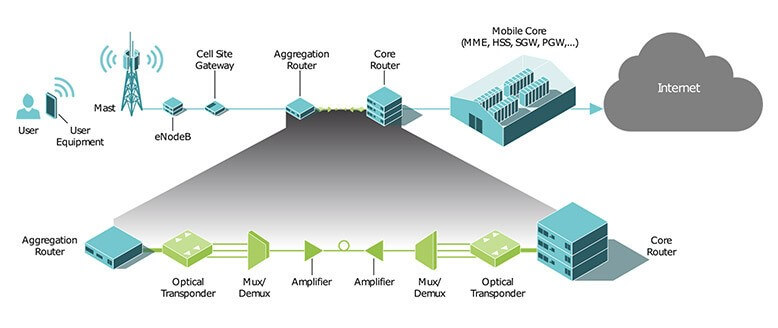 (Image of the OOPT project showing the Cassini Transponder)
(Image of the OOPT project showing the Cassini Transponder)
Core and Services - The most significant costs associated with the operator’s network are the ongoing costs of operations and maintenance. The Core and Services Project Groups are simplifying the core network architecture and improving efficiency and flexibility while reducing ongoing costs associated with keeping a network up and running.
I will be doing another blog in the near future on the products within TIP like Edgecore’s Cassini and the disaggregated cell site gateways from multiple vendors. We will also look at TIP’s new Exchange which will house all the information on specs and how to purchase these products. As always though, I would be more than happy to share additional resources with you or for more technical information on products or SDN give me a shout also you can browse our Open Networking products here or watch webinar recording on the topic here.
Slán go fóill,
Barry